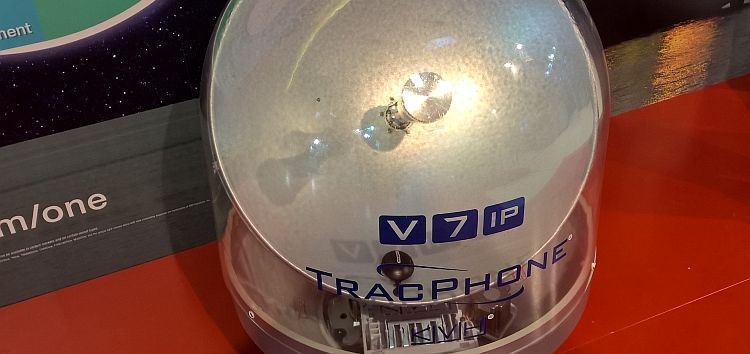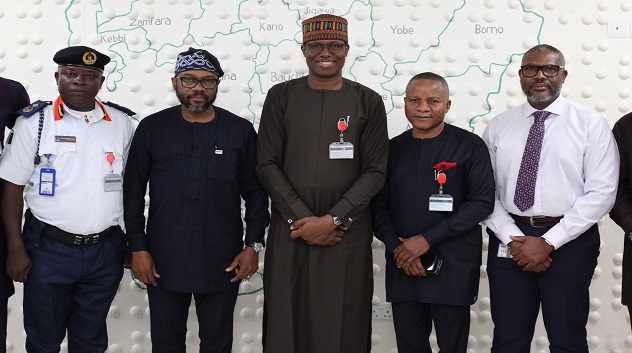Telecom
Satellite Spending Soars to $12Bn

Satellite operators Intelsat, SES, Eutelsat and Inmarsat are spending billions of dollars on high throughput space assets to deliver faster broadband for shipping
The top four operators of satellites for the maritime sector are investing around US$8.5 billion in new satellites, which will provide huge gains in broadband capacity for VSAT applications.
It is probable that the rest are investing, combined, at least another US$4 billion, if this includes a new constellation of L-band satellites by Iridium Communications.
Intelsat is spending up to US$2 billion on satellites over the next three years, peaking this year at up to US$800 million on high throughput and media satellites.
In the second half of this year Intelsat intends to launch three satellites. This could be followed by another three in 2017 and three in 2018.
Some of these will be used to replace existing satellites, while others are forming the new EpicNG constellation of high throughput Ku-band satellites.
The first of these, Intelsat 29e was brought into operation in the second quarter of this year. It delivers high throughput VSAT for ships operating in the Caribbean and over the North Atlantic.
According to Intelsat director of mobility product management Mark Richman, Intelsat 33e will be launched in August this year, and then Intelsat 32e early in 2017 to boost the EpicNG coverage.
Intelsat 33e arrived at the Guiana Space Center in French Guiana in late July in preparation for its launch on an Ariane 5 rocket. There are also plans to launch Intelsat 35e in the second quarter of 2017, and Intelsat 37e in the second half of 2017.
“EpicNG is moving forward as scheduled,” Mr Richman said. “The next main event will be bringing Intelsat 33e into service. Then it is building and launching the rest of the EpicNG constellation. Intelsat 29e has coverage over Latin America, the Caribbean, North America’s East Coast and the North Atlantic to Europe. Intelsat 33e will provide coverage over Asia, Africa, the Mediterranean and the Indian Ocean.”
The company also plans to launch Horizon 3e to provide spot beam coverage over the Pacific from 2018. “We will then add multiple layers of coverage and redundancy over critical areas of maritime traffic,” said Mr Richman. “The IS-32e satellite is planned to provide more coverage over the Caribbean and the North Atlantic. We will be increasing the coverage in key areas to address the expected growth in ship broadband.”
He continued: “We expect a 60 per cent increase in ship-to-shore traffic in the coming years. This is pretty significant for operations. And crew are bringing more mobile devices on board as they have high expectations for crew welfare services. They are deciding where they want to work according to the crew welfare that is on offer.”
Inmarsat has spent US$1.6 billion on its fifth generation constellation and Global Xpress Ka-band platform.
It has also announced it will proceed with a sixth generation of satellites with Ka-band and L-band transponders, which is likely to need similar amounts of investment as the Inmarsat-5 constellation.
In July, Inmarsat extended its long-term strategic partnership with VT iDirect to develop the next generation of satellite communications technologies.
This expands on the development of the Global Xpress technology. Research and development will create new solutions to support the growing integration of satellite and terrestrial networks.
They will also develop smaller, more powerful terminals, and study the boosting of waveform performance. This is part of the Inmarsat Communications Evolution initiative, which is a public-private partnership between Inmarsat and the European Space Agency.
SES plans to invest €2.8 billion (US$3 billion) over five years on new satellites. This is on top of the €900 million it spent on acquiring rival satellite operator O3b Networks and the €1.2 billion in debt it took on, according to a recent presentation it gave to investors. The capital investment includes five satellites, of which three will have high throughput spot beams over maritime areas.
Growth in satellite capacity is in response to rising demand for broadband VSAT on commercial ships, offshore vessels and cruise ships. SES expects the number of ships with broadband connectivity to double from 13,200 in 2015 to more than 32,000 in 2020. SES sales director Giovanni Auciello said these ships will be able to connect to a multi-layer of satellite coverage. “Our next generation satellites are Ku-band, SES-14, SES-12 and SES-15, which are under construction and should be launched by the end of 2017 and operating in 2018.” The O3b satellites provide Ka-band to maritime from at least 45 degrees north and south of the Equator. Cruise ships sailing in the Caribbean are already using O3b coverage.
Eutelsat intends to invest €1.3 billion in satellites and ground infrastructure over the next three years, which could result in the addition of six satellites. Not all of these will service the maritime broadband market, though.
Eutelsat is considering very high throughput satellites that could be launched after 2020. Others have invested in new satellites. Telenor has invested around NKr1.6 billion (US$187 million) in its Thor 7 regional Ka-band service. ViaSat Inc and Telesat are investing in new high power satellites. All this is estimated to be at least US$1 billion in total.
The investment will help to double, to 240, the amount of demand for wide beam satellite transponders that provide broadband in C-band and Ku-band.
According to Northern Sky Research (NSR) the high throughput satellite capacity demand within maritime will rise from just 2 Gbps in 2015 to a huge 46 Gbps in 2025.
“There is a strong focus on new launches of high throughput satellites for the mobility broadband market for maritime and aviation,” said NSR senior analyst Brad Grady. “There is a tremendous amount of bandwidth coming over the next few years. It will be more competitive for the service providers for streaming data and providing value-adding services.”
He expects more market demand for roaming on Ku-band and Ka-band, a small but stable market for C-band, and the need for L-band for safety or machine-to-machine communications. “Satellite operators are developing a capacity ecosystem, investing in new high throughput satellites to capture that mobility market. We expect to see a number of new geostationary high throughput satellite launches coming over the next few years, which will help to increase capacity demand to 46 Gbps in 2025.”
Aside from VSAT, Iridium is preparing to launch the first group of new L-band satellites that will form its Next constellation. It estimated that total capital expenditure in Next would be around US$3 billion, including more than US$600 million this year. This will be the platform for the new Iridium Certus maritime communications service, which is due to begin in 2017.
The first shipment of Thales Alenia Space-built satellites is due to be launched in September. Other launches will follow over the next 12 months. A total of 81 satellites are scheduled to roll off the assembly line, with 66 serving as operational satellites to replace the existing Iridium network, and the remainder serving as ground and in-orbit spares, said Iridium director of product management Brian Pemberton.
When these satellites are launched and commissioned, this will allow Iridium to start its Certus maritime broadband service. “We are working with value-adding resellers, and recruiting more providers across the maritime market by the end of this year,” said Mr Pemberton. “We will start testing the terminals in the first quarter of 2017. We should have commercial services in the second quarter.”
Iridium director of maritime business Kyle Hurst said the initial service will deliver 350 Kbps of bandwidth, which could be doubled through a software update. But the new constellation will ultimately be able to deliver data streams of up to 1.4 Mbps. To achieve this, Iridium is working with suppliers, principally Cobham Satcom and Thales, to offer Certus terminals for a variety of bandwidth capabilities. “We are working with terminal providers and on commercial models for our partners,” said Mr Hurst. “Our new terminals will be up to 1.4 Mbps. We are looking at applications to further enable what we can do with Certus.”
Thuraya Telecommunications Co has started planning for a new constellation to replace its existing satellites. Thuraya-2 has an operating life to 2020 and Thuraya-3 to 2025. “We need next generation plans and expect to share this strategy by the end of this year,” said Thuraya marketing vice-president Christian Cull. “We will also have new products coming later this year. We are expecting tremendous growth in data for improving operations through real-time information and data analytics. These are good reasons for ship operators to look at changing satellite communications and investing in technology.”
Marlink was one of the first to use EpicNG for a maritime customer. An MSC Cruises vessel MSC Divina is using the Ku-band spot beams from the Intelsat 29e satellite for passengers’ broadband requirements. According to Marlink maritime president Tore Morten Olsen, there will be strong growth in passenger broadband demand. This can be met through EpicNG spot beams. “The infrastructure is already on board so ship operators do not need to make any changes,” he said. “And they do not notice the change-over as this is an overlay of the Ku-band fabric through IntelsatOne Flex.”
He also expects that Inmarsat’s Ka-band Fleet Xpress services will be integrated into Marlink’s solutions. “Ku-band and Ka-band can work together in our portfolio. There does not need to be a single solution. The focus is to provide peace of mind to our clients as we see more growth in VSAT. We are now offering a global 60cm antenna network for maritime as more capacity is available.”
KVH Industries has seen increasing use of its mini VSAT Broadband for transmission of operations data. KVH vice president of marketing Mike Mitsock said owners are able to reduce fuel costs and reduce risk by using this data. “A 10 per cent reduction in fuel costs can be achieved,” he said. “Route plans can be optimised by using weather routeing, and the risk of machinery damage can be mitigated.”
Mr Mitsock said KVH was looking at how to provide data analysis and fault diagnostics for owners. “We would proactively help owners by telling them that something needs to be fixed, so they can plan for the next port call or drydocking.” The challenges are how to get the data off the ship to a data centre and to analyse it. “The size of the files would be huge to upload, as ships could generate terabytes of data over a year. So we need to find a better way, to optimise the uplink,” he explained.
A solution would be to do the initial data analytics on the ships. “Not all of the data needs to go off the ship.” Mr Mitsock added: “More analytics should happen on board. Some manufacturers are embedding analytics into the sensors so they can identify issues. We are working with software agents to develop local processing and analytics, so less data is sent to shore.”
Network service devices are a vital element for optimised broadband. Marpoint has developed the EVO² device as an enterprise-grade router for controlling a multi-person vessel network on all satellite broadband installations. This can include VSAT, FleetBroadband, Iridium, 3G, and WiFi. Business development director Anastasis Kyrkos said EVO² uses bandwidth allocation policies and network management to allow the running of multiple applications for crew internet, business email, file transfers, and video streaming. “All vessels will require innovative hardware and software network solutions to handle all their ship-to-shore and shore-to-ship communications needs,” he said.
Navarino has included full redundancy in its network service platform Infinity Cube. “It can switch between nodes and will allow several applications simultaneously,” said communications vice-president Christian Vakarelis. “It can automatically select the satellite network, maintaining connectivity, including continuous voice over IP and data transmissions.” It can operate GTMaritime’s email application, online training and chart applications. Navarino recently agreed to host C-Map’s digital navigation solutions on Infinity.
Telecom
IHS Nigeria Hosts Telecom Industry Stakeholders to Discuss Protection of Critical National Infrastructure in Lagos State

IHS Nigeria, part of the IHS Holding Limited (NYSE: IHS) (“IHS Towers”) group, one of the largest independent owners, operators, and developers of shared communications infrastructure in the world by tower count, recently hosted a high-level meeting of stakeholders in the telecommunications industry including regulators and law enforcement agencies, at its corporate headquarters in Lagos.

The meeting was organized to develop a multi-stakeholder action plan for the protection of Critical National Information Infrastructure (CNII) assets in Lagos state.
Recognizing the importance of communications infrastructure as the backbone of national security, economic growth and social cohesion, the stakeholders at the meeting convened under the umbrella of the Association of Licensed Telecoms Operators of Nigeria (ALTON) agreed on the urgent need for collaborative solutions to ensure the protection of these vital assets.
The meeting was attended by senior representatives from the telecommunications stakeholder groups and regulatory bodies including the Nigerian Communications Commission (NCC), the Association of Licensed Telecoms Operators of Nigeria (ALTON), Association of Telecommunications Companies of Nigeria (ATCON) and the Lagos State Infrastructure Maintenance and Regulatory Agency (LASIMRA).
Also in attendance were representatives from the Mobile Network Operators (MNOs), and InfraCos as well as the Nigeria Security and Civil Defence Corps (NSCDC), the security agency tasked with the protection of Critical National Infrastructure across the country.
Following extensive deliberations, the stakeholders resolved to establish a working group dedicated to addressing key industry challenges, including the vandalization and theft of telecommunications infrastructure, arbitrary shutdown of base stations, fiber cuts due to road construction and the denial of access by unauthorized individuals by leveraging technology for real-time monitoring and protection, strengthening security measures around telecommunication sites and collaborating more with the security and regulatory agencies to mitigate these challenges.
The stakeholders underscored the need to prioritize deterrence and prevention of these incidents and highlighted the importance of public awareness campaigns to sensitize the host communities and public of the need to protect telecommunications infrastructure in their localities.
Dapo Otunla, Senior Vice President & Chief Corporate Services Officer of IHS Nigeria, commented, “The protection of Critical National Information Infrastructure (CNII) has been a critical concern for all industry stakeholders.
“We are experiencing daily losses of assets, which significantly impact on the quality of service delivered to subscribers. Addressing these issues is paramount to sustaining Nigeria’s digital ecosystem and meeting regulatory expectations.”
Telecom
MTN Champs Continental Relays: Over 1,000 Athletes Gear Up for Lagos Showcase

Over 1ooo athletes are already set to participate in the upcoming MTN Champs Continental Relays, taking place between April 9 and April 12 at the UNILAG and Yabatech Sports complexes. Organisers anticipate even more registrations before the April 2 deadline.

MTN Champs is Nigeria’s largest grassroots sports competition, a collaboration between MTN Nigeria and Making of Champs (MoC), providing a platform for young athletes to showcase their talents and potentially represent Nigeria on the global stage.
Osaze Ebueku, Senior Manager, Go-to-Market at MTN Nigeria at the opening ceremony of the MTN Champs Classics events in Benin had emphasised the long-term vision behind MTN Champs: “We’re building future Olympians for Nigeria. MTN Champs is about more than competition. It’s about changing lives.”
The continental relays mark the second leg of the MTN Champs Season 3, following the Classics competition in Benin, which saw 4,371 event entries from 2,056 athletes.
As of March 24, the Lagos leg had already recorded 2,821 event entries across different age categories, highlighting the growing enthusiasm around the competition.
The registered athletes are spread across four categories, with 174 in the Cadet (U-14) category, 388 in Youth (U-17), 270 in Junior (U-20), and 279 in the Senior category.
To ensure smooth participation, organisers have outlined important guidelines. Athletes in the Cadet, Youth, and Junior categories must submit a signed Parental Consent Form, while all registered schools and athletes must collect their competition bibs by April 8 at the competition venue to confirm their participation and secure their place on the start list.
Sports enthusiasts can look forward to an electrifying showcase of emerging talent, as young athletes seize the opportunity to prove their skills on a professional stage.
Telecom
Again, Labour Fumes, Threatens Shutdown of Telcos over Non-Implementation of 15 Percent Tariff Reduction

Nigeria Labour Congress (NLC) is threatening to shut down operations of telecommunications companies over their refusal to comment on the 15 percent reduction in telecom tariffs.

Recall that that organised labour, through the NLC, forced the federal government and NCC to reduce the telecommunications tariff hike from 50% to 35% after threatening to shut down telecom operations and the NCC in response to what it saw as exploitative economic policies amidst excruciating suffering, hardship, and deepening poverty.
The government had previously formed a 10-member committee, consisting of five government and NLC representatives, to deliberate on the thorny topic of tariff hikes within two weeks and report back before making a final decision on the new telecom tariff structure.
Consequently, on Friday, February 21, 2025, the committee, at a meeting conducted in the office of the National Security Adviser (NSA) that lasted nearly three hours, decided on a 15 per cent tariff cut.
According to reports, in accordance with the conditions of the agreement, an official communiqué announcing the tariff reduction was scheduled to be released on Saturday, February 22.
According to Chronicle,iIt was said that the meeting began at 4:00 p.m. and concluded around 7:00 p.m., during which NLC representatives insisted that the tariff hike be withdrawn.
According to sources, after significant pressure from NLC representatives in the 10-man committee, the government and NCC gave up and agreed on the 15% decrease, which the government or NCC should have announced the next day.
However, at the time of this report, no such announcement has been made.
Leaders of the labour union are not taking the government’s failure to announce or implement the 15% tariff decrease lightly, suspecting that they have been duped.
The Labour leaders have therefore resolved to directly confront the NCC and telecommunications operators next week.
Though it has been reported that the date for the start of the industrial action against the NCC and telecom providers has been set and mobilisation is underway, the information is being closely guarded.
One of the leaders of the NLC stated that “We have received directives to commence mobilisation since last week. In fact, the date for the commencement of industrial action against the NCC and telecommunication operators’ offices across the country has been fixed. We have been warned not to disclose the date because the plan is to take all concerned by surprise. We are not giving any notice because we thought we had resolved this matter over a month ago. It is as if we have been scammed. Therefore, we have decided to confront the matter head-on.”
On February 12, the NLC expressed outrage over telecommunications companies’ tariff hikes, despite an earlier agreement with the Federal Government and the NCC.
According to the Labour union, “If the telecommunications companies fail to revert to the old tariff by the end of February 2025, a total shutdown of their operations nationwide will commence on March 1, 2025.”
To demonstrate its seriousness, the NLC declared that, as a first step in resisting the arbitrary tariff hike, it directed that workers and other willing citizens boycott the services of MTN, AIRTEL, and GLO daily between 11:00 a.m. and 2:00 p.m. until the end.
On Tuesday, February 11, NLC leaders issued a communiqué at the conclusion of their Central Working Committee (CWC) meeting in Lokoja, Kogi State, urging workers and citizens to suspend data purchases from telecommunications companies, which have also become one of their most effective tools for exploiting Nigerian citizens.
The communiqué, signed by Joe Ajaero and Emma Ugboaja, Congress’ President and General Secretary, respectively, instructed NLC State Councils and industrial union affiliates to quickly sensitise and mobilise their members and the general public in their jurisdictions.

 Telecom3 days ago
Telecom3 days agoAgain, Labour Fumes, Threatens Shutdown of Telcos over Non-Implementation of 15 Percent Tariff Reduction

 News3 days ago
News3 days agoNNPC Ready to Go to Capital Market for IPO- CFIO

 E-Business3 days ago
E-Business3 days agoFG Launches Online Visa Approval Centre

 E-Business3 days ago
E-Business3 days agoQNET Disassociates From Fraudulent Academy in Abuja, Supports EFCC Arrest

 Telecom2 days ago
Telecom2 days agoIHS Nigeria Hosts Telecom Industry Stakeholders to Discuss Protection of Critical National Infrastructure in Lagos State

 E-Financial2 days ago
E-Financial2 days agoTitan Trust Bank Selects Oracle FSS for Core and Digital Banking Technology

 E-Business3 days ago
E-Business3 days agoFirm Discovers Sophisticated Chrome Zero-day Exploit Used in Active Attacks

 Telecom3 days ago
Telecom3 days agoEverything You Need to Know About MTN’s MIP 2025 Fellowship Webinar













